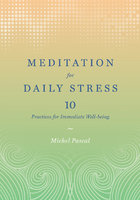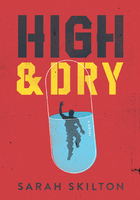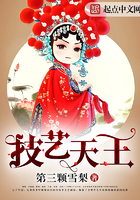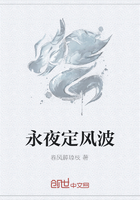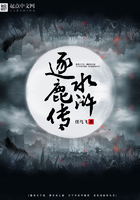Andy Atkins used to drink Elijah Craig. He drove to Richmond to get it, which was a full day's trip from Harlan, and in order to make the trip especially worthwhile, he would drink the entire bottle in one sitting. On these nights, Andy would inexplicably become "Julio." He would no longer answer to Andy. He became sort of charmingly obnoxious for a bit, jumping over the fire and bleating obscenities. I was impressed. Elijah Craig became the nicest drink I could imagine. The bottle even came in a commemorative box.
This was my introduction to bourbon, as a freshman in high school, and I can't say my education went too much further over the next eight years. I would often pick up a glass of whiskey, become disappointed with myself that I didn't seem to be getting something right, look longingly at a beer, and try to make peace with my lack of refinement. I would think back, with comfort, to the woods of Kentucky, where everyone seemed to assume that the contents of the bottle were there simply for getting drunk. And I suppose this is how all drinkers begin, in the woods with a drunk named Julio roaring into the darkness against the crickets and the owls.
But then you grow up and are asked to know things. And at a certain point, that includes things about drinking-not just because there are expectations of maturity, but also because of the great void of the bar, which is something you must contend with again and again if you are a drinking adult living anywhere other than the woods of a dry county in Kentucky. So there you are, sitting on a stool, and the person behind the bar is going to ask you a question and you have to answer it. The answer is basically arbitrary. Most surely the answer will be ethanol, CH3CH2OH, but of course you don't say that. You feel that saying spiced rum, a gin rickey, or Johnnie Walker Blue Label will make your presence in the liquid pharmacy a little less arbitrary. You may have found you can get away with knowing nothing about wine, that you can call mulligan on that one and still get by. But liquor feels different, and so you pick one drink to order everywhere you go, like you're James Bond or a cowboy. And you look down the bar and your ten-year-old self is sitting there shaking his head at how much of a phony you've become, and you want to say to him, You don't understand; it gets complicated. You want to explain that adulthood is something of an insult that prompts the whiskey in the first place. Who knew that you had to live with yourself in your own head for such a long time? Alcohol seems to soften the intensity of that fact. Great writers have articulated this same truth, and have dealt with the condition by turning to drink. So you look at your younger self and shrug. He'll understand soon enough. And who let him in the bar anyway?
You settle on whiskey, and you would be right to do that. And you know that there is whiskey and there is bourbon and there is scotch, all of which seem to be different somehow. You may have heard that bourbon must be made in Kentucky and something about Bourbon County. You have heard that water makes a difference, as does age. There is something called sour mash, which seems to be a good thing. But that's about it. Few seem to be much help on the topic-even the bartender isn't sure. In fact, there hasn't been much information available to you or anyone else: The sales reps and advertising copy for liquor brands say very little of any substance. The problem is that, for the last eighty years, the act of drinking whiskey has been drastically distanced from the act of making it. And since home distilling, which is arguably the best way to learn about spirits, is illegal, there aren't that many people who know how to talk with any authority about distillation.
When home brewing became legal in 1978, a renewed interest in beer led to more-knowledgeable consumers, the establishment of craft breweries, and far more variety in bar and store offerings. Although laws around distilling may not be relaxed in the near future, the arrival of small distilleries may begin to resolve this disconnect common among drinkers: How can you know so little about something you do so often?
In the old days, it was easy: Whiskey was distilled beer, and brandy was distilled wine. That was pretty much the entire survey of distilled spirits until the 1600s, when rum was invented, and from that point on, the landscape of distilled spirits got more complex. Whiskey itself became subdivided into many categories. For American whiskey, those categories refer to the primary grain ingredient-corn for bourbon, rye for rye, malted barley for malt whiskey, etc. Other whiskeys are usually classified by the country from which they originate: Scotch whisky and Canadian whisky (both spelled without the "e"), as well as Japanese and Irish whiskey, each have their own rules, including ones that restrict their production to their home country. So all bourbon is whiskey, but not all whiskey is bourbon. Same for scotch, rye, and other subcategories-they are all types of whiskey.
Contrary to myth, you can make bourbon anywhere in the United States, and indeed small distillers are making bourbon in Colorado, Wisconsin, New York, and even Texas. As a Kentuckian, I used to insist that bourbon must be made in Kentucky, but that isn't true. (For a short while after I learned this truth, I continued to perpetuate the false perception out of state loyalty.) One aspect of the myth is true, though: You can't mislead the consumer as to where it is made, so only Kentucky bourbon is made in Kentucky. Sometimes distilleries will make bourbon but prefer to call it something else. For instance, Jack Daniel's is described as Tennessee whiskey, even though it could also be called bourbon. Some Tennessee whiskeys use a charcoal filtering method, known as the Lincoln County Process, but since not all of them do, the only thing that really makes Tennessee whiskey distinctive is geography.
Let's get more specific. To say that whiskey is distilled beer is accurate, but to be precise, whiskey is a spirit made from a fermented grain mash, distilled to a low proof, and usually, but not always, aged in barrels. A fermented grain mash-that is, a beer-like liquid at around 5 to 8 percent alcohol-can be made with corn, rice, oats, wheat, spelt, or quinoa. It cannot be made with sugar, fruit, agave, or honey. Not all fermented grain mashes become whiskey, however. Which brings us to the second part of the definition of whiskey, that bit about low-proof distillation.
Historically, whiskey was made in crude stills, known as pot stills or alembics. A pot still is capable of separating alcohol from the rest of the mash, but the spirit will retain a fair number of impurities that give whiskey and other flavorful spirits (like brandy) their distinctive taste. The spirit that results from a single distillation is so impure it is undrinkable; whiskey distilleries using pot stills must redistill their spirit at least once to remove the most unpalatable impurities. Theoretically, whiskey distilleries could continue to redistill further, each time increasing the alcohol percentage and removing further impurities and flavor. Eventually, this spirit would approach pure, tasteless ethanol. But making such a high-proof spirit on a pot still is extremely labor intensive and impractical.
In the early 1800s, Anneas Coffey invented a still that could distill to a much higher proof than regular pot distillation. This type of distillation, known as column, reflux, or fractional distillation, forces many distillations within the still itself, and yields a pure spirit that is more neutral to the palate. This higher proof spirit, known in the United States as neutral grain spirit (NGS), is also called grain whisky in Scotland. Another common name for the spirit made from high-proof stills: vodka. Vodka is described by United States law as spirits distilled at 95 percent alcohol or higher, and having no distinctive character. Whiskey and most vodka are both made with grain, but the distinction is in how they are distilled and whether the objective is to retain or remove flavor.
.
Many commercial whiskey distilleries in America now use reflux stills, which can be calibrated to mimic pot stills during whiskey distillation and are more efficient. But Scottish law mandates pot stills for whiskey production, and many distillers believe the best whiskey is made from these cruder stills. Most American and Scotch whiskeys are distilled twice, whereas Irish whiskey is distilled three times. Jameson would have you believe that the third distillation enhances the quality of their whiskey, but it simply means that Jameson is more neutral: fewer impurities, less flavor.
The final component to most whiskey is aging, which plays probably the biggest role in how a whiskey looks and tastes. Any spirit that is unaged will be clear (gin, silver tequila, grappa, vodka, some rum), and any spirit that has aged will be yellow or brown (dark rum, brandy, whiskey, and reposado and a?ejo tequilas). There is one exception where a whiskey can be unaged: Corn whiskey is the only American category of whiskey that is legally allowed to be sold unaged. But all other American whiskey must, by law, sit in a barrel. Jack Daniel's recently tried to release a product called "unaged rye whiskey," but the federal government forced them to change their label to read "Tennessee Rye Spirits Distilled from Grain," which is inelegant, if not confusing. The federal government doesn't specify how long whiskey has to age, however. Some distillers will rest their spirit in an oak barrel for just a few minutes and call it whiskey.
Since the 1870s, unaged whiskey has held a second-class position among whiskeys. Commercial distilleries chose to age their product to improve it and distinguish it by sight from illegally made clear whiskey, known as moonshine, or cheaply made commercial whiskey. The word moonshine today can refer to any illegally made alcohol, but historically referred to unaged spirits made from corn. I use moonshine as a synonym for unaged whiskey, which I realize is controversial; some purists argue that moonshine refers only to illegally made spirits. But until other terms for unaged whiskey-white whiskey, white dog, white lightning, or new make-enter the vernacular, moonshine is probably the best word we have.
Within each category of whiskey, there are, of course, subtle variations. Among American whiskeys, there are straight whiskeys (aged two years) and "bottled-in-bond," a more restrictive subset of straight whiskeys. Among bourbons, there are rye, high-rye, and wheated variations of the corn-dominant mash bill. And no matter the ingredients, bourbon can be made with either a conventional mash process or a sour mash, which recycles spent liquid after distillation into the next batch's new mash (somewhat like the process for making sourdough bread). Most commercial bourbons use a sour mash process; most craft distillers do not. There are five distinct types of Scotch whisky, though single malt and blended are the most common. Whiskey is made in at least eighteen countries, many of which are mimicking scotch-style whiskey, and we can assume the American small-distillery movement will expand beyond the United States in time. You can already pour a shot of whiskey a day for many years and never have to drink the same whiskey twice.
When asked by the bartender to order a drink, you would be right to order a whiskey, but you wouldn't be typical. Statistically, Americans are more likely to order vodka. (This country drank 63 million cases of vodka in 2011.) And among those average Americans, one out of every ten orders a "super-premium" vodka, like Grey Goose, Belvedere, Ciroc, or Ketel One. If you take anything from this book, I hope it will be that every vodka order is a missed opportunity.
Vodka is a feat of engineering. By definition via American law, it has no "distinctive character, aroma, taste, or color," and so vodkas differentiate themselves by the vague characteristic of smoothness. This is not purely marketing, but it is a narrow way to judge a spirit. Smoothness is achieved not by trial and error, or experimentation, or happenstance, or tradition, but by industrialized, scientifically rigorous, efficiency-optimized equipment. There are no ghosts in vodka. It is the least lyrical of spirits, made to be adulterated, covered over, diluted, and hidden.
If an invisible dose of ethanol is what you're looking for, then I suppose vodka makes sense. When I first moved to New York, my vaguely Russian roommate used to take me to the Russian Samovar, a restaurant a few blocks from Times Square, where we would order infused vodkas from a simple list. The type of vodka is not important at Samovar; it's merely the vehicle for the infusions that can be seen in glass infusion jars behind the bar. This strikes me as the right way to drink vodka: minimum pretense, and flavored after the fact with fruits, herbs, and roots to let the drink become something else.
It can be intense to drink distilled ethanol (which, incidentally, comprises 10 percent of commercial gasoline-don't think about that too hard) right from the still, so over time, distillers learned to dress up vodka in lots of different ways. Most gin and absinthe originate as vodka before being infused and redistilled with flavoring agents. Liqueurs such as triple-sec, schnapps, amaretto, and ouzo are vodkas infused through a process not unlike the Russian Samovar's, with sugar added. But vodka succeeds at being the most versatile spirit because it's the least interesting, which suggests that the astronomic sales of super-premium vodkas are one of the great advertising triumphs of modern history. Incidentally, this is true not only of big players like Grey Goose. I've seen several small distilleries bill their vodka as a sipping vodka, pointing out the positive aspects of the taste of their spirits. This is by definition impossible. If they are making vodka that has a taste, they are breaking the law.
Why not drink something else? Gin is flavored vodka by a different name. Rum can be an interesting spirit, but too often reminds me of its origin as a cheap alternative to whiskey and brandy, made by slaveholding colonialists out to create something intoxicating the easiest way possible. Tequila and its cousin mezcal get closer to a true craftsman's spirit, but they can be made only in certain parts of Mexico. Brandy is, to my mind, the only other spirit competitive to whiskey as a rewarding quotidian drink, though for me it, too, sits at a far remove from American history and experience.
Whiskey, though-whiskey is steeped in America. It is the spirit that George Washington distilled at home and offered to his troops during the Revolutionary War, and the spirit Thomas Jefferson foresaw when granting land in western Virginia to corn growers. It is the spirit that defined the soul of the South after its defeat in the Civil War, and the spirit that was most easily manufactured (sometimes through grossly artificial means) during Prohibition, fueling the urban speakeasies of the Jazz Age, before the hangover of the Great Depression. And it is the spirit of Appalachian moonshiners throughout Prohibition's long and tangled aftermath.
Whiskey evokes the place of its making, as weather and climate influence its fermentation and aging. It measures time in degrees of color and taste, the liquid gradually darkening and mellowing in a warehouse full of wood ticking and creaking as shifts in temperature mediate pressure in the barrels through the seasons. It tastes of both past and present. It is, literally, a field of grain, cooked and fermented; distilled and aged; reduced to something of such great and abstract value that it is cherished next to art and literature. It is simultaneously inert and living, conservative and liberal, rarefied and common. Of all the spirits, it is the most challenging and rewarding to make, as well as the most personal. There is a reason why so many bourbons are named after people and so few other spirits are.
And so back to the metaphorical bar, and the question of what to drink. Let me offer some suggestions. Choose whiskey. Drink it neat. Try many kinds. Drink it outdoors if the weather permits, or near a fire if not. Drink it only on special occasions-though this is not meant to limit your consumption so much as force you to evaluate your blessings at any given time and consecrate them with whiskey. Whiskey is designed for company, and it is best shared. And the only proper way to consume it is to count your joys and acknowledge your sadness, and remind yourself of the ghosts of spirits past that live on in glass to glass.
WHAT AM I DRINKING?
The landscape of distilled spirits can be very confusing, but all liquors can be classified based on four major variables: how it is aged, how it is distilled, what it is made from, and where it is made. Unaged spirits are clear and aged spirits are yellow to brown. Darker spirits are usually aged in new barrels, from which they absorb more flavor, and lighter spirits are usually aged in used barrels. In general, more flavorful spirits are distilled in pot stills to a low proof, and more neutral spirits are distilled in column stills to a higher proof. Grain, fruit, sugar, and agave are the most common ingredients. And because countries have often protected the types of spirits they produce, geography plays a role in what spirits may be called.
"The Fifth Ward of Brooklyn is a section redolent of fragrant memories. There it was that the 'moonshine' industry flourished in all its glory.… The furtive makers of 'Jersey lightning' who in recent times get raided in their suburban retreats are simple amateurs compared with their city prototypes.… They had wild, barbaric ideas of what constituted real 'luxury'. An illustration was their big Investments in costly jewelry. Nearly all of them wore 'headlight' diamond studs, big as filberts and dazzling in their luminous intensity. Now and again you would see a boss distiller wearing a gold watch that weighed half a pound, with a chain long and ponderous enough to hang a ten-year old boy by the heels."
-"KINGS OF THE MOONSHINERS: ILLICIT DISTILLERS WHO RULED IN 'IRISHTOWN,'" NEW YORK TIMES, March 18, 1894

